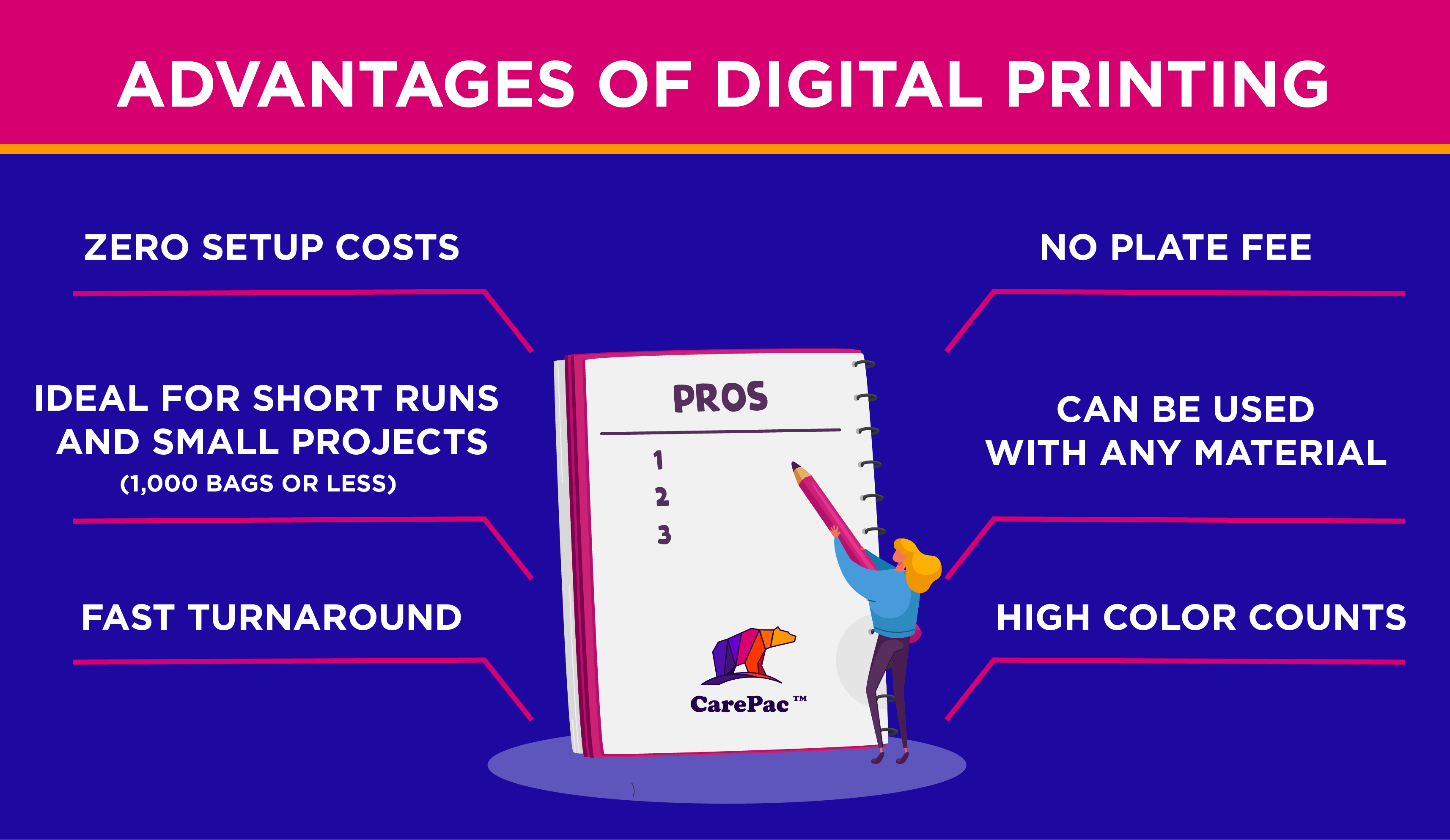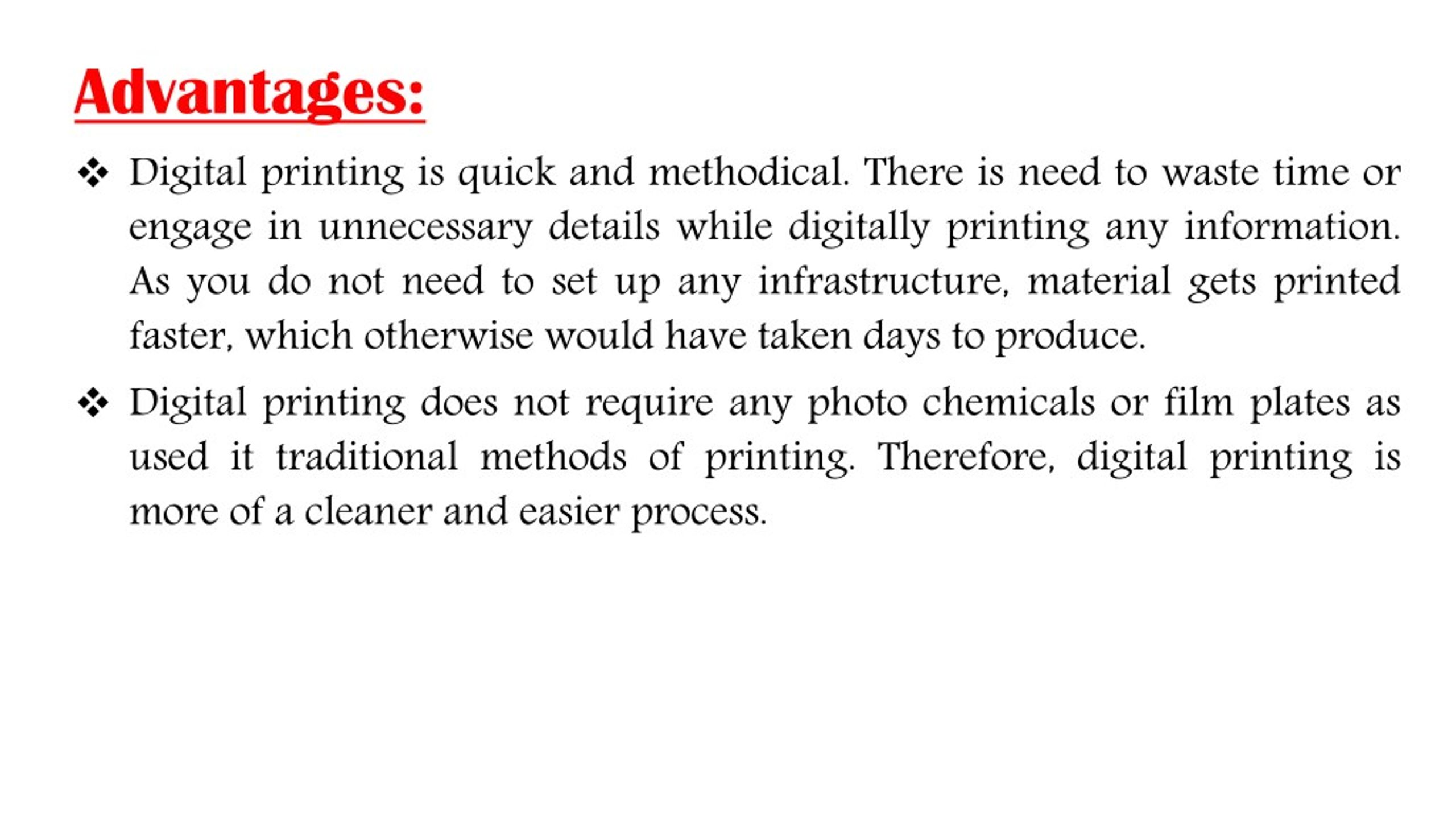An Unbiased View of Digital Printing
An Unbiased View of Digital Printing
Blog Article
The Only Guide to Digital Printing
Table of ContentsExamine This Report on Digital PrintingThe Only Guide for Digital PrintingThe 5-Minute Rule for Digital PrintingThe Single Strategy To Use For Digital PrintingGetting My Digital Printing To WorkAn Unbiased View of Digital Printing
Variable data printing, such as straight mail with individualized codes and addresses, is ideally fit for electronic printing. Digital quick printing only needs four actions of layout, review, printing and binding to get whatever done. Digital fast printing has an unmatched advantage: print on demand.According to PMMI, digital printing allows brands and producers to react promptly to consumer needs while improving the supply chain, decreasing warehousing price and waste, and appreciating faster time to market. That all noises great, yet just how does this technology do all that? The significant differentiator of these technologies is that there are no set-up charges and no plates with digital printing.
The Ultimate Guide To Digital Printing
According to Wikipedia, the biggest difference between electronic printing and typical approaches such as lithography, flexography, gravure, or letterpress - Digital Printing is that there is no requirement to change printing plates in electronic printing, whereas in these analog printing methods home plates are consistently changed. This leads to quicker turn-around time and lowers expense when making use of electronic printing.
Fast manufacturing means obtaining your item to market faster. It likewise indicates it's simpler and faster to make modifications in the future, when you alter a dish, add a SKU, or create seasonal packaging. Digital printing is highly flexible, so it's simple to make adjustments to the package layout rapidly. Everything returns to home plates.
With traditional printing methods, short-run printing is simply not possible. Because a great layout can make or break your product, electronic printing continually produces high-grade, clear and vibrant graphics each time.
Digital printing is the process of printing digital-based photos directly onto a selection of media substrates. There is no requirement for a printing plate, unlike with countered printing. Digital files such as PDFs or desktop computer publishing data can be sent directly to the digital printing press to publish on paper, picture paper, canvas, material, synthetics, cardstock and other substrates.
The Best Guide To Digital Printing
According to PMMI, electronic printing permits brands and makers to respond rapidly to client demands while improving the supply chain, minimizing warehousing price and waste, and taking pleasure in faster time to market. That all noises terrific, but just how does this innovation do all that? The significant differentiator of these modern technologies is that there are no set up costs and no plates with digital printing.
This results in quicker turnaround time and decreases expense when utilizing electronic printing.

All About Digital Printing
With standard printing methods, short-run printing is simply not possible. Due to the fact that a great layout can make or damage your item, electronic printing consistently develops high-grade, clear and vibrant graphics each time.

According to PMMI, digital printing permits brand names and manufacturers to react quickly to customer needs while boosting the supply chain, lowering warehousing expense and this article waste, and appreciating faster time to market. That all sounds wonderful, but how does this modern technology do all that? The major differentiator of these technologies is that there are no set-up costs and no plates with digital printing.
The Main Principles Of Digital Printing
According to Wikipedia, the best distinction between digital printing and typical techniques such as lithography, flexography, gravure, or letterpress is that there is no requirement to replace printing plates in digital printing, whereas in these analog printing techniques the plates are continuously changed. This causes quicker turnaround time and lowers expense when utilizing electronic printing.
Rapid production indicates getting your product to market quicker. It likewise indicates it's simpler and faster to make adjustments in the future, when you transform a dish, include a SKU, or develop seasonal packaging. Digital printing is highly versatile, so it's simple to make adjustments to the bundle style rapidly. It all returns to home plates.

Digital Printing for Beginners
Digital printing is the process of printing digital-based pictures straight onto a Read More Here variety of media substrates. There is no requirement for a printing plate, unlike with countered printing. Digital data such as PDFs or desktop posting documents can be sent straight to the electronic printing press to print on paper, photo paper, canvas, material, synthetics, cardstock and other substratums.
Report this page